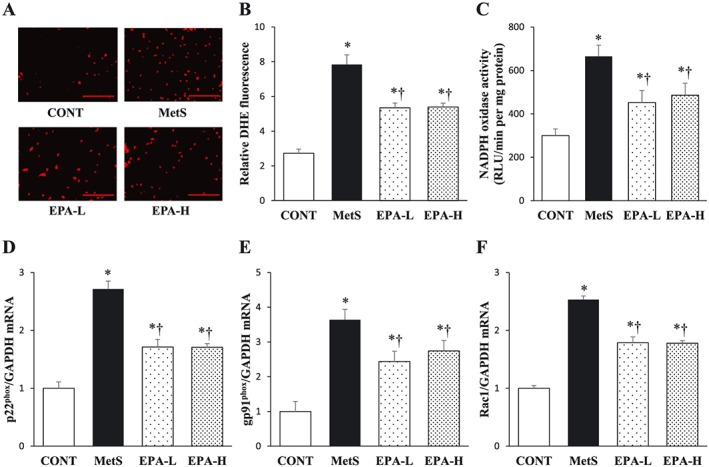Figure 3.

Cardiac oxidative stress in rats of the four experimental groups at 13 weeks of age. (A) Superoxide production as revealed by dihydroethidium staining in interstitial regions of the left ventricular (LV) myocardium. Scale bars, 100 µm. (B) Relative dihydroethidium (DHE) fluorescence intensity determined from sections similar to those in (A). (C) Nicotinamide adenine dinucleotide phosphate (NADPH)‐dependent superoxide production in LV homogenates. Results are expressed as relative light units (RLU) per minute per milligramme of protein. (D–F) Quantitative reverse transcription‐polymerase chain reaction (RT‐PCR) analysis of p22phox, gp91phox and Rac1 mRNAs, respectively. The amount of each mRNA was normalized by that of glyceraldehyde‐3‐phosphate dehydrogenase (GAPDH) mRNA and then expressed relative to the mean value for the control (CONT) group. All quantitative data are means ± standard error of the mean (n = 10, 10, 11 and 11 for CONT, metabolic syndrome [MetS], low‐dose eicosapentaenoic acid [EPA‐L] and high‐dose eicosapentaenoic acid [EPA‐H] groups, respectively). *P < 0.05 vs. CONT; †P < 0.05 vs. MetS.
